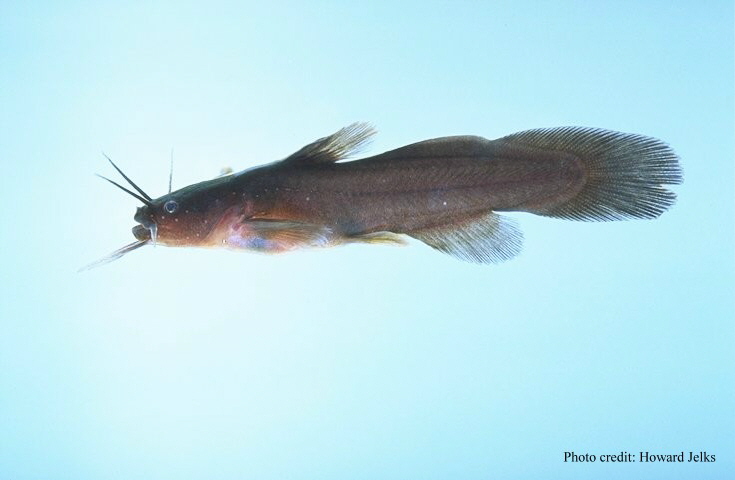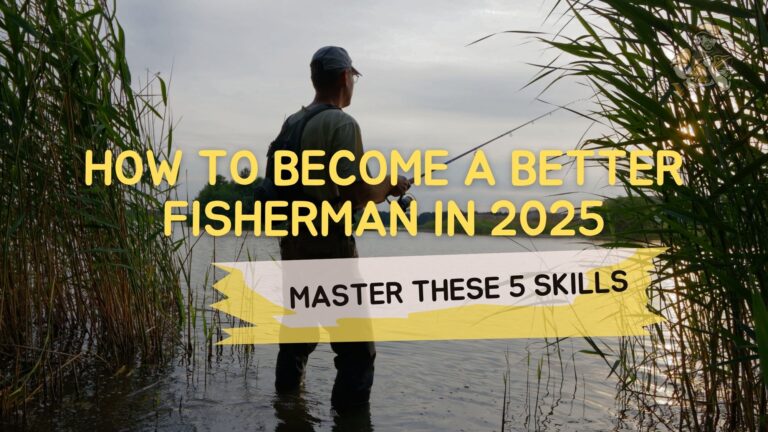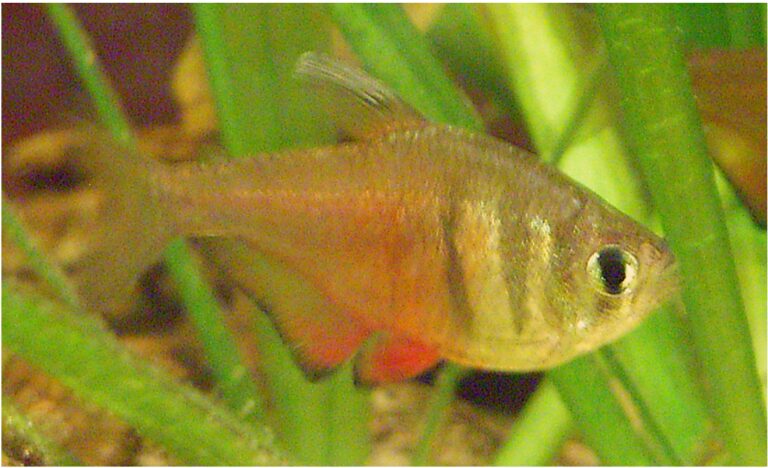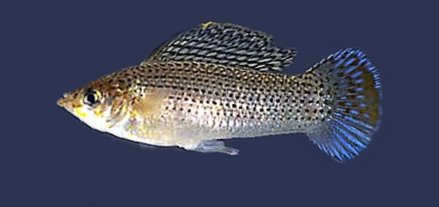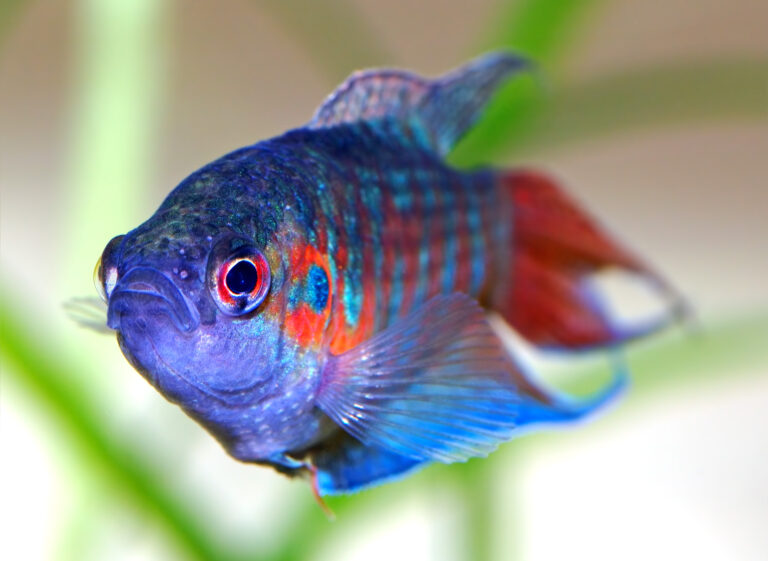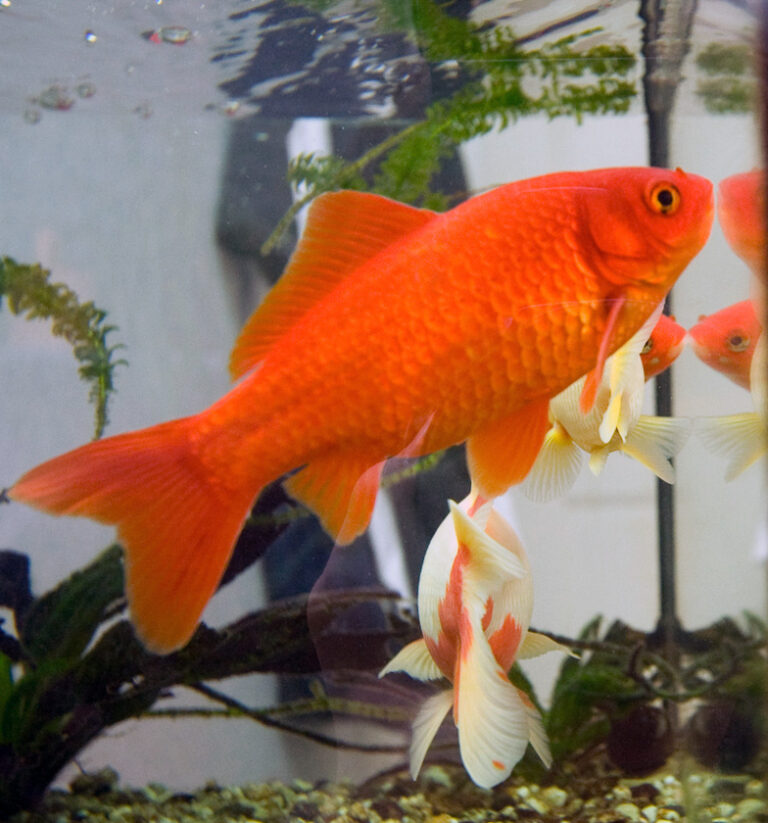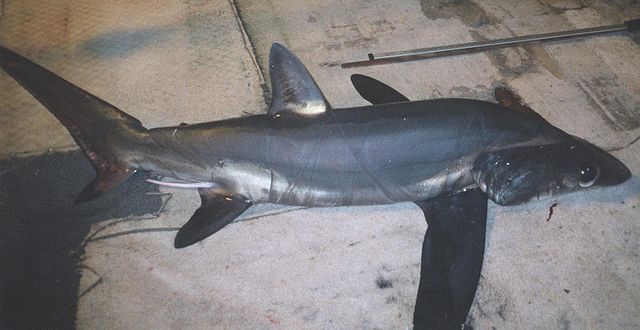Surfcasting Techniques: Master Beach Fishing and Catch More Fish
By Adam Hawthorne | Last Modified: May 12, 2025
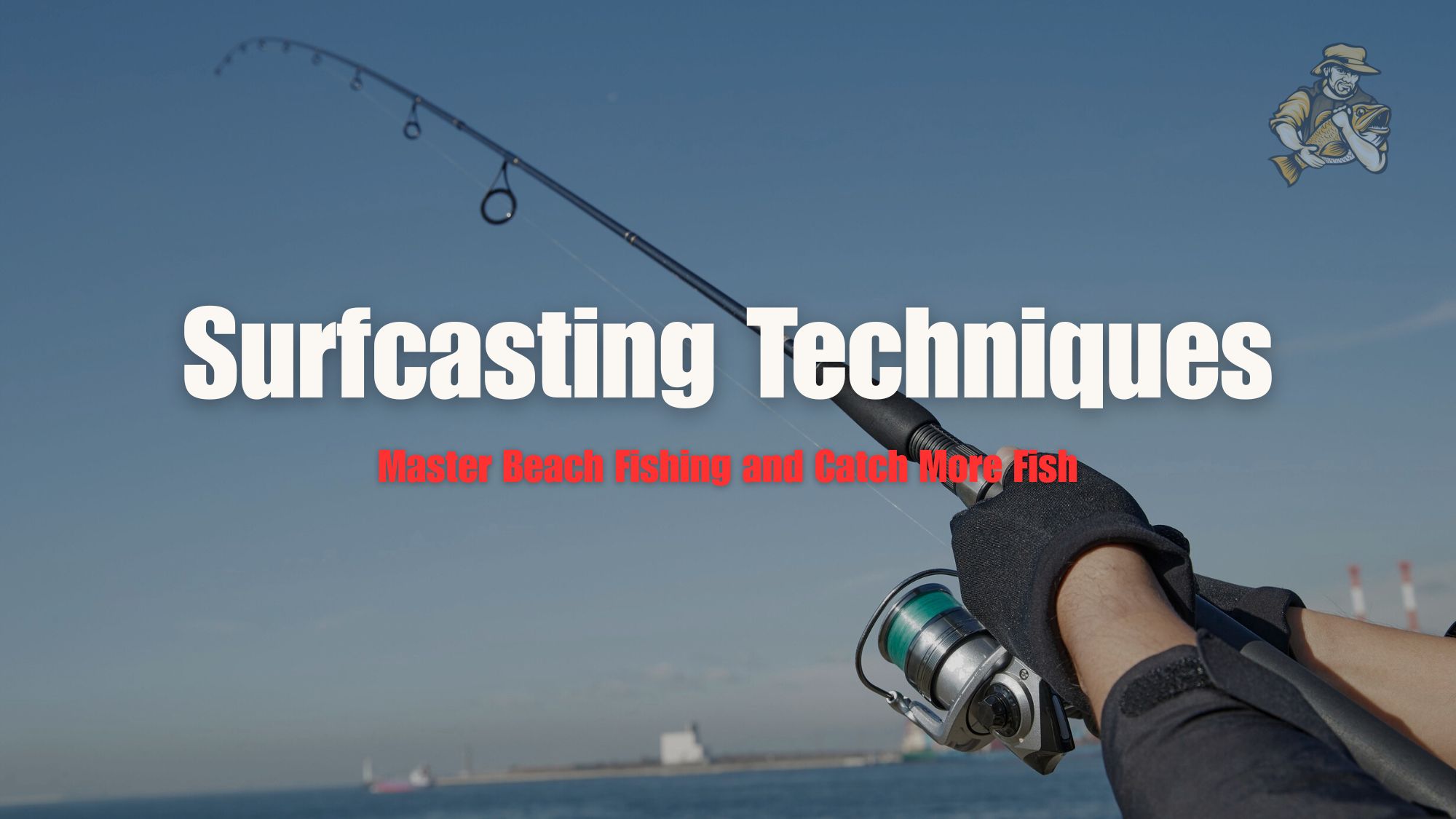
There’s something almost magical about standing at the edge of an ocean, rod in hand, as waves crash around your feet. I’ve been surfcasting for over twenty years now, and the thrill of battling the elements while connecting with magnificent fish never gets old.
That said, I’ve also spent countless frustrating hours on beaches from the Outer Banks to Cape Cod without so much as a nibble. Surfcasting techniques can be incredibly rewarding or painfully disappointing – often on the same day.
If you’re looking to improve your beach fishing game, you’ve come to the right place. I’m going to share the surfcasting techniques that have actually put fish on the sand for me, including some approaches you won’t find in most fishing manuals.
Surfcasting Techniques Start with Understanding the Environment
Before diving into specific surfcasting techniques, we need to get something straight – the surf zone is a dynamic, ever-changing environment that requires a completely different mindset than fishing calm lakes or even moving rivers.
The first time I tried surfcasting was at Assateague Island in Maryland. I brought the same tackle I’d been using for largemouth bass in Michigan lakes, cast out about 30 feet, and promptly lost every piece of terminal tackle I owned to the powerful undertow. Lesson learned.
The surf zone breaks down into several key areas:
- The wash – the shallow area where waves finish breaking and water rushes up the beach
- The trough – the deeper channel that typically runs parallel to the beach
- The sandbar – a raised area beyond the trough where waves start to break
- The slough – deeper pockets or depressions in the seafloor
- The outer bar – a second sandbar system further from shore
Where you cast depends entirely on what you’re targeting. Smaller fish like pompano and whiting often feed in the wash and inner trough, while larger predators may lurk behind the sandbars waiting to ambush baitfish.
Learning to “read” a beach takes time. I spent three summers fishing the same half-mile stretch of North Carolina coastline before I could reliably identify the deeper cuts and channels where fish tend to concentrate.
Finding the Sweet Spots for Successful Beach Fishing
The most important surfcasting technique isn’t about gear or bait – it’s about location. Even on a seemingly featureless beach, there are prime spots where fish concentrate:
- Cuts or rip currents – These deeper channels cutting through sandbars create ideal feeding zones for beach fishing
- Points or spits – Areas where the beach juts out typically have deeper water nearby
- Structure – Jetties, pier pilings, or rocky areas create ambush points for predators
- Color changes – Different water colors often indicate depth changes or bottom composition differences
My surfcasting experiences have taught me that finding these productive spots consistently is what separates occasional luck from regular success.
My fishing buddy Dave, who’s been guiding the Carolina coast for 23 years, taught me to look for “nervous water” – areas where the wave pattern looks different because of underwater structure. It took me years to train my eyes to spot these subtle differences, but it’s made all the difference.
I remember a blazing hot August morning at Cape Lookout when everyone was skunked except for the three of us who had positioned at a barely perceptible cut in the sandbar. We landed seven red drum while anglers 50 yards away caught nothing. Location truly is everything.
Essential Surfcasting Techniques for Different Conditions
Now let’s get into the actual surfcasting techniques that catch fish. I’ll break these down based on conditions and target species, because what works for striped bass in Massachusetts won’t necessarily work for redfish in Florida. These proven beach fishing methods have filled my cooler on countless trips.
The Standard Cast and Retrieve
This is your basic surfcasting approach – cast out, let your bait or lure settle, and slowly retrieve. But there’s nothing basic about doing it effectively.
For years, I was retrieving too quickly in the surf. Tom Bradford, an old-timer I met on Ocracoke Island back in 2017, watched me casting for an hour without success before finally walking over.
“Son, you’re reeling like there’s a race,” he said, taking my rod and demonstrating a painfully slow retrieve that felt wrong but immediately produced a nice bluefish.
The standard retrieve works best when:
- You’re using lures that need movement (spoons, plugs, etc.)
- Targeting actively feeding fish
- Fishing relatively calm conditions
- Covering ground to locate fish
When using the standard retrieve, vary your speed and add occasional pauses. Some days fish want a steady crawl, other days they prefer erratic movements with long pauses. Last October, I was having zero luck with my usual steady retrieve until I started incorporating 5-7 second pauses that triggered aggressive strikes from otherwise disinterested flounder.
The Fish Finder Rig – Essential for Serious Beach Anglers
If there’s one surfcasting technique every beach angler should master, it’s the fish finder rig. This setup allows your bait to move naturally with the surf while remaining in the strike zone. I’ve caught more fish with this technique than all others combined when conditions are right.
The basic components of this powerful surfcasting setup are:
- A pyramid or storm sinker (weight depends on conditions)
- A sinker slide with a bead
- A swivel
- 12-24 inches of leader
- An appropriate circle hook
Learning to properly set up a fish finder rig can dramatically improve your catch rate from day one.
What makes this rig so effective is that fish can pick up the bait and run without feeling the weight of the sinker. I’ve caught everything from massive sharks to tiny whiting on fish finder rigs.
The problem most beginners have with this rig is using the wrong sinker weight. On a rough day at Montauk Point last year, I watched frustrated anglers constantly reeling in because their 3-oz sinkers wouldn’t hold bottom. Meanwhile, the few of us using 8-oz storm sinkers were staying put and catching stripers.
Of course, there are variations of the fish finder for different scenarios. When I’m targeting pompano in the Gulf, I’ll switch to a double dropper rig with smaller hooks and shorter leaders. For striped bass in heavy surf, I’ll use a longer, heavier leader and bigger circle hooks.
The Cut Bait Technique
For larger predatory fish, few techniques outperform a well-presented cut bait. The scent trail it creates can draw fish from surprising distances.
My approach to cut bait has evolved dramatically over the years. I used to just hack a mullet into chunks and throw it out, but now I’m much more methodical:
- Select fresh, oily baitfish (mullet, bunker, mackerel)
- Make clean cuts that preserve the natural shape where possible
- Keep the skin on one side of the bait
- Hook it so it won’t spin in the current
The size of your cut bait matters tremendously. My worst surfcasting mistake was always using bait that was too large. When I started cutting my baits smaller – about the size of two stacked quarters for most conditions – my catch rates nearly doubled.
Cut bait shines when:
- Targeting bottom feeders or scavengers
- Fishing deeper troughs or channels
- Dealing with murky or choppy water
- Fishing at night
I remember a frustrating evening at Hunting Island when nothing would hit my artificial lures. As sunset approached, I switched to cut mullet and hooked into three bull redfish in under an hour. Sometimes natural bait is the only option that produces.
The Plug and Teaser Combo
This more advanced surfcasting technique involves using a surface plug with a teaser fly rigged about 18-24 inches above it. The combo creates the illusion of small baitfish chasing a wounded prey.
I learned this technique from a weathered Rhode Island surfcaster named Mike who consistently outfished everyone during a striper blitz. While we all scrambled to swap lures trying to match whatever the bass were feeding on, Mike steadily landed fish after fish with his plug-teaser combo.
“The plug gets their attention, but half the time they hit the teaser,” he explained, showing me how to rig it with a dropper loop above the main lure.
The technique requires practice and can be prone to tangling for beginners, but it’s devastatingly effective when striped bass, bluefish, or Spanish mackerel are feeding on schools of smaller bait. Last summer, during a dawn session at Race Point on Cape Cod, my plug-teaser setup outfished straight plugs 5 to 1.
The Specialized Techniques
Beyond these core approaches, there are several specialized surfcasting techniques worth mentioning:
The Squidding Technique During squid runs along the northeast coast, using squid jigs with a specific slow lift-and-drop motion can produce buckets of fresh squid for bait or the table. The technique isn’t complicated, but the timing has to be impeccable. You need to fish at night, preferably with some ambient light (dock lights, moonlight), and develop a feel for the subtle takes.
I spent three full nights learning this technique from a Portuguese angler in Provincetown who barely spoke English but was a master squidder. Communication was minimal, but watching his rhythmic movements taught me more than any tutorial could have.
The Sand Spike Sentinel Method This passive approach uses multiple rods in sand spikes to cover different distances and depths simultaneously. It’s particularly effective when you’re not sure where the fish are holding or when targeting larger species that might be scattered.
The key mistake most anglers make here is placing their rods too close together. I space mine at least 7-10 yards apart and stagger the casting distances. On a memorable night at Padre Island, this approach helped me intercept a school of jack crevalle that was moving parallel to the beach but only within a very specific depth range.
The Artificial Casting Strategy When using artificials in the surf, the standard cast-and-retrieve gets upgraded to a more strategic approach:
- Cast at 45-degree angles up-current
- Allow the lure to swing in the current while retrieving
- Vary retrieve speed dramatically
- Target visible structure or color changes
I developed this approach after years of frustration trying to use freshwater bass techniques in the surf. The current is your friend with this method – it creates a more natural presentation as your lure swings through the target zone.
Gear Considerations for Different Surfcasting Techniques
Each surfcasting technique demands specific gear considerations. While I won’t dive into detailed equipment recommendations here, understanding the relationship between technique and gear is crucial.
For standard casting and retrieving with lures, a 9-10 foot medium-heavy rod paired with a 4000-5000 size reel spooled with 20-30lb braided line works well for most scenarios. This setup gives you the casting distance needed while maintaining the sensitivity to work artificials effectively.
When deploying fish finder rigs with bait, especially in rougher conditions, I’ll step up to a 11-12 foot heavy rod with a 6000-8000 size reel and 30-50lb braid. The longer rod provides better casting distance with heavy weights and helps keep your line above breaking waves.
My plug-and-teaser setup splits the difference – typically a 10-foot medium-heavy rod that can handle the weight of both lures while providing the action needed to work them properly.
Whatever technique you’re employing, always consider these factors:
- Casting distance requirements
- Weight of terminal tackle
- Sensitivity needed to detect bites
- Abrasion resistance in rough surf conditions
I learned about gear-technique matching the hard way during a trip to Montauk. I brought my lighter 9-foot rod during a fall striper blitz where 30+ mph winds and massive surf made casting nearly impossible. The local anglers with their 12-foot heavers were reaching feeding fish while I was woefully undergunned.
Surfcasting Techniques Across Different Beaches
One thing I’ve discovered through extensive travel is that surfcasting techniques need to be adapted to specific beach types. The approaches that work on the steep, rocky beaches of the Northeast differ dramatically from those effective on the gradual slopes of Gulf Coast shores.
Northeast Rocky Beaches
On the boulder-strewn beaches of Maine or the rocky shores of Rhode Island, surfcasting often involves targeting structure and deeper water that’s closer to shore. The presence of rocks creates natural ambush points for striped bass and other predators.
In these environments, I’ve had greatest success with these specific approaches:
- Casting parallel to shore along rock edges
- Using larger profile lures that push more water (big bucktails, needlefish plugs)
- Focusing efforts during moving tides when water flows around rock structures
The technique here is less about long-distance casting and more about precision placement. I remember fishing the rocks at Point Judith, Rhode Island, where success came from dropping my offering within inches of specific boulders rather than bombing casts to the horizon.
Mid-Atlantic Sandy Beaches
The long, sandy beaches of New Jersey, Delaware, and Virginia present a different challenge, often featuring multiple sandbar systems and prominent troughs. Here, reading the beach becomes crucial, as does the ability to cast significant distances to reach outer bars.
My approach on these beaches typically involves:
- Looking for cuts or sloughs in sandbars
- Using fish finder rigs with cut bait for deeper troughs
- Employing artificial lures for the wash zone during active feeding
During a spring trip to Assateague Island, I noticed a subtle depression in the outer sandbar that was barely visible at low tide. When the tide rose, this spot produced continuous action as stripers used the cut to ambush baitfish being swept through the channel.
Southeast Beaches
From North Carolina down through Florida, the typically warmer waters and diverse species require different tactics. Many southeast beaches feature gradually sloping bottoms and sometimes multiple, subtle sandbars.
My techniques for these regions include:
- Using lighter tackle overall
- Focusing on dawn/dusk feeding windows with artificials
- Employing natural baits like sand fleas for pompano
- Looking for the “fishy” green-to-blue water transition zones
Last April, I was fishing Hunting Island in South Carolina and struggling until local angler showed me how to find the deeper cuts by looking for areas where waves weren’t breaking as dramatically. These subtle depressions held feeding redfish that wouldn’t venture into shallower areas.
Gulf Coast Beaches
The typically calmer, clearer waters of many Gulf beaches call for more finessed approaches. Species like pompano, whiting, and redfish often feed in surprisingly shallow water, especially during cooler months.
For Gulf surfcasting, I’ll typically employ:
- More visible floats or popping corks for predators
- Double or triple dropper rigs with small pieces of shrimp
- Extra-long leaders in the clear water
- More attention to tide movement than wave action
My biggest Gulf Coast lesson came during a Panama City Beach trip where my standard east coast techniques produced nothing. Switching to a lighter approach with fresh peeled shrimp on small hooks immediately connected me with a mixture of pompano and whiting.
Adapting Your Surfcasting Techniques to Changing Conditions
Perhaps the most important surfcasting skill isn’t any specific technique, but rather knowing when to change approaches as conditions shift. I’ve learned from experienced surfcasting guides that adapting to conditions often matters more than your specific gear choices. The surf zone is incredibly dynamic, with many factors affecting fish behavior:
- Tidal stage
- Wave height and period
- Water clarity
- Wind direction
- Barometric pressure
- Time of day
- Baitfish presence
Successful surfcasters are constantly adjusting. During a week-long trip to Cape Hatteras, I changed techniques completely at least once each day based on shifting conditions.
The first morning featured calm, clear conditions with visible bait schools, making artificial lures the clear choice. By afternoon, an onshore wind had churned up the surf and reduced visibility, prompting a switch to cut bait on fish finder rigs. The following dawn brought birds working over feeding fish, indicating a need for faster retrieves with metals that could reach the action quickly.
Most struggling surfcasters I meet have one or two techniques they’re comfortable with and try to force them regardless of conditions. That’s like having only a hammer in your toolbox and treating every problem like a nail.
Reading the Water
The ability to “read” the surf zone comes with experience, but there are key indicators I look for:
Birds diving or hovering – Almost always indicates baitfish and feeding activity. When I see birds working, I immediately switch to faster retrieves with metals or similar lures that can quickly reach the zone.
Nervous water – Subtle surface disturbances often indicate predators herding bait. This calls for targeted casts with appropriate artificials.
Ripping or discolored water – Indicates current movement through structures, often creating prime feeding zones. These areas typically warrant careful presentation of natural baits.
Breaking waves pattern changes – Shows bottom contour variations. Uneven breaking patterns usually indicate deeper water where fish might be holding.
Last summer at Duck, North Carolina, I noticed a slight discoloration in the water about 60 yards off the beach. While other anglers cast randomly, I focused exclusively on this zone, resulting in multiple Spanish mackerel when others caught nothing.
Surfcasting Techniques for Specific Target Species
After years of trial and error, I’ve developed specialized beach fishing approaches for different fish. Let’s break down some species-specific surfcasting techniques based on my experiences and what I’ve learned from top surfcasting experts:
Striped Bass
These powerful predators are a primary target for Northeast and Mid-Atlantic surfcasters. My striper techniques have evolved significantly over the years.
Early in my surfcasting journey, I was exclusively throwing large plugs and bucktails for stripers with moderate success. Then I spent a dawn session watching a veteran angler at Montauk Point absolutely hammer fish using fresh bunker chunks on fish finder rigs. It was a humbling experience that broadened my approach.
I’ve found that stripers will hit artificials more reliably in these conditions:
- Dawn and dusk periods
- Overcast days with chop on the water
- When bait is visibly present
- During moving tides
For bait approaches, fresh bunker (menhaden) or fresh clams on fish finder rigs have produced my largest specimens, particularly during nighttime hours and in rougher surf conditions.
My most productive striper session ever came during a stormy October night at Montauk when 4-6 foot waves were crashing and most anglers had abandoned the beach. Using fresh bunker chunks on a fish finder rig with an 8oz sinker, I landed seven stripers between 28-38 inches in four hours.
Redfish (Red Drum)
These copper-colored beauties require different approaches depending on their size. Smaller “puppy drum” will readily take artificials in the surf, while the larger bull reds typically prefer cut bait presentations.
In the Outer Banks, I’ve had tremendous success targeting reds with these approaches:
- Cut mullet on fish finder rigs for larger specimens
- Gold spoons retrieved at moderate speeds for smaller fish
- Focus on deeper sloughs and cuts between sandbars
- Fish the hour before and after tide changes
One particular technique that’s served me well for redfish involves using a fish finder rig with a cut mullet head. Instead of the standard approach, I’ll sometimes add a small float to the leader to keep the bait just off the bottom. This subtle modification has triggered strikes from otherwise reluctant bull reds, particularly in areas with crabs or other bottom scavengers that might pick at bottom baits.
Pompano
These delicious, hard-fighting fish require more finesse than many surf species. In the Gulf and Southern Atlantic beaches, pompano feed primarily on small crustaceans in the sand.
My most consistent pompano technique involves:
- Double or triple dropper rigs with small hooks (#2 or #4)
- Fresh sand fleas or small pieces of shrimp
- Focus on the trough just behind the breaking waves
- Adding small, bright floats or beads near hooks
Last winter in Naples, Florida, I was struggling to find pompano until a local showed me how they were targeting the “transition” water where waves were just starting to break. This subtle zone about 20 yards off the beach was holding feeding pompano that were easily spooked by casts landing too close.
Bluefish
These toothy predators can be both a targeted species and a nuisance depending on your goals. When specifically targeting blues, I’ve had best success with:
- Metal lures retrieved quickly
- Popping plugs worked aggressively on the surface
- Cut bait with wire leaders
- Focusing on faster-moving water near inlets or structure
During a memorable blitz at Sandy Hook, NJ, blues were so thick that virtually any lure would get hit, but the fish showed a clear preference for faster retrieves. Slowing down even slightly resulted in fewer strikes, teaching me that presentation speed can sometimes be more important than lure selection.
Common Surfcasting Mistakes I’ve Made (So You Don’t Have To)
Over my decades of surfcasting, I’ve made nearly every mistake possible. The most common surfcasting errors often come from applying freshwater tactics to saltwater environments. Here are some of the most important lessons I’ve learned the hard way:
Casting Directly Into the Waves
For years, I cast straight out from shore, perpendicular to the beach. This puts your line directly against breaking waves, creating drag and reducing sensitivity.
I now cast at angles – typically 30-45 degrees up-current from my position – allowing waves to cross my line at an angle rather than head-on. This single change reduced my line breakage and improved bite detection dramatically.
During a frustrating session at Cape May Point, nothing was working until an old-timer showed me how to position myself down-current of a subtle outflow and cast up into it at about a 40-degree angle. This presentation looked so much more natural that I immediately started catching fish.
Using Too Heavy Tackle
Early in my surfcasting career, I was convinced I needed extremely heavy gear for all beach fishing. While robust equipment is necessary for rough conditions and large species, over-gunning makes presenting baits naturally much harder.
I now match my gear to both conditions and target species, sometimes using medium-action 9-foot rods when targeting smaller fish in calmer surf. The increased sensitivity and improved casting accuracy more than make up for the reduced max distance.
Neglecting Observation Time
The biggest mistake beginners make is rushing straight into casting without taking time to observe the water. I still force myself to spend at least 15 minutes watching before making my first cast at a new location.
What am I looking for? Bird activity, surface disturbances, wave patterns indicating structure, current movement, and other anglers’ success. That brief observation period has saved me countless hours of unproductive fishing.
Last spring at Fort Fisher, NC, I arrived at dawn eager to cast. Instead, I forced myself to watch first and noticed subtle swirls about 40 yards out where a small depression created a perfect feeding station. That observation led to catching and releasing 12 bluefish in two hours.
Regional Surfcasting Techniques from My Beach Fishing Travels
Through my travels along different coastlines, I’ve picked up regional surfcasting techniques that often work well when transported to new areas. Learning from local beach fishing communities has expanded my technique arsenal tremendously:
New England Rock Hopping
In the rocky areas of Maine and northern Massachusetts, locals taught me to “rock hop” – carefully moving along boulder fields to access deeper water without long casts. This technique focuses on precision placement over distance and has worked surprisingly well for me even in the rockier sections of primarily sandy beaches elsewhere.
The technique requires extreme caution regarding footing and wave awareness, but accessing these areas puts you in touch with fish that rarely see lures. During a trip to Acadia National Park, rock hopping let me catch multiple stripers from spots completely inaccessible to beach anglers.
Florida Sight Casting
In the clearer waters of Florida beaches, I learned to spot fish before casting – a technique called sight fishing. While more commonly associated with flats fishing, this approach works surprisingly well in the surf zone during calm conditions.
The technique involves:
- Polarized sunglasses (absolute must)
- Higher vantage points when possible
- Looking for shadows or movement, not necessarily the fish itself
- Quick, accurate casts well ahead of moving fish
At Canaveral National Seashore, I spent a fascinating morning watching for and casting to pompano visible as they moved down the beach in small groups. My catch rate was dramatically higher than blind casting would have produced.
Carolina Cast and Move
In the Outer Banks, locals taught me the “cast and move” technique – making a single cast in a likely spot, then moving 10-15 yards down the beach for the next cast. This covers tremendous ground and is particularly effective when fish are scattered or moving along the beach.
The approach works best with artificial lures that can be retrieved quickly or cut bait rigs that can be left briefly while you prepare another rod. During a slow day at Ocracoke when fish were scattered, this method helped me locate a pocket of feeding sea mullet that I would have missed with stationary fishing.
Seasonal Adjustments to Surfcasting Techniques
Successful surfcasting requires adapting your approach to seasonal patterns. After studying seasonal fish migration patterns and observing how fish behavior changes throughout the year, I’ve developed a calendar-based approach to beach fishing. Here’s how my surfcasting techniques change throughout the year:
Spring Techniques
Spring surfcasting focuses on migrating species and fish moving into shallower water as it warms. During this period, I concentrate on:
- Inlets and areas where deeper water approaches shore
- The first couple hours of incoming tides
- Matching lures to prevalent baitfish (often herring or mullet)
- Slower retrieves in the still-cool water
Last April at Chincoteague, I had great success targeting the deep cuts just outside the inlet during the first two hours of incoming tide, when stripers were actively feeding on migrating baitfish.
Summer Approaches
Summer brings warmer water, different bait species, and often necessitates focusing on dawn/dusk periods or night fishing. My summer adaptations include:
- Focusing effort around dawn, dusk, and night
- Using lighter tackle for more natural presentations
- Targeting feeding zones created by structure rather than temperature breaks
- Looking for diving birds indicating feeding activity
During hot August days, I’ll often fish only the first and last hours of daylight, or switch to night fishing entirely. A memorable midnight session at Virginia Beach produced my personal best red drum when most daytime anglers had completely struck out.
Fall Strategies
Fall brings baitfish migrations and often the year’s best surfcasting. My fall tactics include:
- Focusing on migrating baitfish schools
- Casting where current creates ambush points
- Using larger profile lures matching the prevalent bait
- Being ready for sudden blitzes
Fall surfcasting can be spectacular when conditions align. During a mid-October trip to Montauk, we encountered a massive striped bass blitz where fish were literally chasing bait onto the beach. Being prepared with a variety of lures allowed me to quickly match what they were feeding on.
Winter Approaches
In northern regions, winter often means moving south or targeting different species. In southern beaches, winter can be prime time for certain species like pompano. My winter adjustments include:
- Slowing presentations dramatically in colder water
- Focusing on deeper holes and channels
- Using natural baits more frequently
- Fishing the warmest part of the day
During a January trip to Nags Head that featured water temperatures in the mid-40s, I found that slow-dragging a bucktail with a strip of squid produced strikes when artificial-only presentations went untouched.
Three Advanced Surfcasting Techniques Worth Mastering
For those looking to take their beach fishing to the next level, here are three advanced surfcasting techniques that have significantly improved my success. I learned these approaches from professional surf fishing tournaments where the competition forces innovation:
The Water Column Coverage Technique
This approach involves systematically covering different depths in the water column to locate where fish are holding. Rather than guessing, you methodically eliminate unproductive zones.
The process:
- Make your first cast with a surface or near-surface lure
- Follow with a mid-depth presentation
- Finish with a bottom-focused offering
- Once you locate the productive zone, focus subsequent casts there
I developed this system after a frustrating day at Cape May where I couldn’t locate feeding fish. By systematically working through the water column, I discovered stripers were holding right on the bottom behind the first sandbar – a pattern I would have missed with my usual approach.
The Tide-Phase Rotation System
This technique involves rotating through different rigs and presentations based on specific tide phases rather than randomly switching when something isn’t working.
My typical rotation:
- Last hour of outgoing: Artificial lures near structure or channels
- Bottom of tide: Bait fishing deeper holes with fish finder rigs
- First hour of incoming: Artificial lures near areas baitfish will be pushed into
- Mid-tide incoming: Coverage technique across multiple depths
- High tide: Focus on the wash and shoreline structure
By matching techniques to tidal stages rather than randomly changing approaches, I’ve developed a much more systematic and productive system. During a week at Cape Lookout following this rotation, I caught fish during every tide stage while nearby anglers had only sporadic success.
The Strong Wind Adaptation
Many anglers avoid surfcasting in strong winds, but with the right adjustments, these conditions can actually improve success rates by positioning predators in predictable locations.
My strong wind technique modifications:
- With onshore winds: Fish the deeper troughs where baitfish get pushed by wave action
- With offshore winds: Focus on the outer bars where water clarity remains better
- With lateral winds: Position yourself upwind of structure or cuts and cast with the wind
During a particularly windy week at Hatteras with 25+ mph northeast winds, most anglers stayed home. By positioning in the protection of a small point and casting with the wind into a deep slough, I connected with multiple red drum feeding on baitfish disoriented by the turbulent conditions.
Surfcasting Techniques FAQs
Here are answers to the most common questions I receive about beach fishing approaches and strategies:
What’s the best surfcasting technique for complete beginners?
For those just starting out, I recommend mastering the fish finder rig with cut bait. This setup is relatively simple to use, stays in place well in surf conditions, and lets the fish find your bait through scent even if your location isn’t perfect. Focus first on learning to read beaches for structure and deeper water, then graduate to more active beach fishing techniques once you understand the environment.
How do I know which surfcasting technique to use on a new beach?
When approaching an unfamiliar beach, start by spending 15-20 minutes observing. Look for birds, breaking fish, changes in wave patterns indicating structure, and what other successful anglers might be doing. I always bring a complete selection of tackle so I can adapt to what I observe rather than forcing a technique that might not fit the conditions.
Which surfcasting technique works best in rough surf conditions?
In genuinely rough conditions (waves 4+ feet, strong current), I’ve had most success with fish finder rigs using cut bait and heavy (6-8 oz) sinkers. The scent disperses well in churned-up water, and the heavy weight keeps your bait in place. Cast into deeper sloughs or cuts between sandbars where fish often hold during rough conditions, seeking relief from the most turbulent water.
When should I use artificial lures versus natural bait in the surf?
This depends on several factors. I typically use artificial lures when:
- Water clarity is good (1+ foot visibility)
- Fish are actively feeding (birds working, visible splashes)
- During dawn/dusk peak periods
- When targeting predatory species like bluefish or striped bass
I switch to natural baits when:
- Water is heavily clouded or churned up
- Fish aren’t visibly feeding on the surface
- Targeting bottom-feeding species like pompano or drum
- During slow midday periods in hot weather
What’s the most underrated surfcasting technique most anglers overlook?
The simple act of varying retrieve speeds is tremendously underrated. Many anglers cast and retrieve at the same pace all day regardless of conditions or fish behavior. I’ve had days where a painfully slow retrieve outproduced a moderate one by 10 to 1, and other days where speed was essential. Always experiment with dramatically different retrieval speeds until you find what triggers strikes.
Final Thoughts on Surfcasting Techniques
After decades spent casting into the surf from Maine to Florida, I’ve learned that adaptability trumps perfection every time. The most successful beach fishing anglers I’ve met aren’t necessarily those with the most expensive gear or the prettiest casting form – they’re the ones who can read conditions and adapt their surfcasting techniques accordingly.
The techniques I’ve shared here have put countless fish on the beach for me, but they’re meant as starting points for your own discovery process. Every beach is different, every day brings new conditions, and the fish are always teaching us something new if we’re willing to learn.
My most memorable surfcasting success wasn’t a record-breaking catch but rather a modest 28-inch striper caught on a stormy November evening at Montauk Point. What made it special was that I had carefully observed changing conditions, adapted my technique accordingly, and made a perfect presentation to a feeding fish while dozens of other anglers around me struggled.
That’s the essence of successful surfcasting – the perfect alignment of observation, adaptation, and execution. Master these techniques, but never stop developing your own variations based on what the water and the fish are telling you.
Remember that the beach will always humble even the most experienced anglers. I still get skunked occasionally despite decades of experience. But the process of learning, adapting, and occasionally connecting with magnificent fish in their natural environment makes surfcasting one of the most rewarding fishing experiences available.
The next time you stand at the edge of the ocean, rod in hand, I hope these techniques help you connect with the fish of your dreams. And if you see a guy with a black lab named Finn working a stretch of beach with methodical precision, stop by and say hello – I’m always happy to compare notes.

Meet Adam Hawthorne
I’m a lifelong fishing enthusiast who’s spent years exploring rivers, lakes, and oceans with a rod in hand. At Fishing Titan, I share hands-on tips, honest gear reviews, and everything I’ve learned about fish and ocean life, so you can fish smarter and enjoy every cast.
Share:

Meet Adam Hawthorne
I’m a lifelong fishing enthusiast who’s spent years exploring rivers, lakes, and oceans with a rod in hand. At Fishing Titan, I share hands-on tips, honest gear reviews, and everything I’ve learned about fish and ocean life, so you can fish smarter and enjoy every cast.
Related Articles
-
Tadpole Madtom
The Tadpole Madtom (Noturus gyrinus) represents one of North America’s smallest and most elusive catfish species, playing a crucial ecological role as both predator and…
-
Diamond Tetra
The Diamond Tetra (Moenkhausia pittieri) stands as one of the most captivating freshwater fish species in the aquarium trade and its native South American ecosystems….
-
How to Become a Better Fisherman in 2025: Master These 5 Skills
There’s something magical about that moment when your line goes tight and you feel the unmistakable pull of a fish on the other end. Whether…
-
Flame Tetra
The Flame Tetra (Hyphessobrycon flammeus) stands as one of the most recognizable and beloved freshwater aquarium species in the characin family. This vibrant South American…
Fish Species
-
Sailfin Molly
The Sailfin Molly stands as one of the most distinctive freshwater fish species in both wild ecosystems and aquarium environments. Known scientifically as *Poecilia latipinna*,…
-
Paradise Fish
The Paradise Fish stands as one of the most remarkable representatives of the labyrinth fish family, captivating aquarists and marine biologists alike with its vibrant…
-
Telescope Goldfish
The Telescope Goldfish (Carassius auratus) represents one of the most distinctive and recognizable varieties of fancy goldfish in the aquarium trade. Distinguished by its characteristic…
-
Bigeye Thresher Shark
The Bigeye Thresher Shark represents one of the ocean’s most extraordinary predators, distinguished by its dramatically elongated tail fin that can extend up to half…

